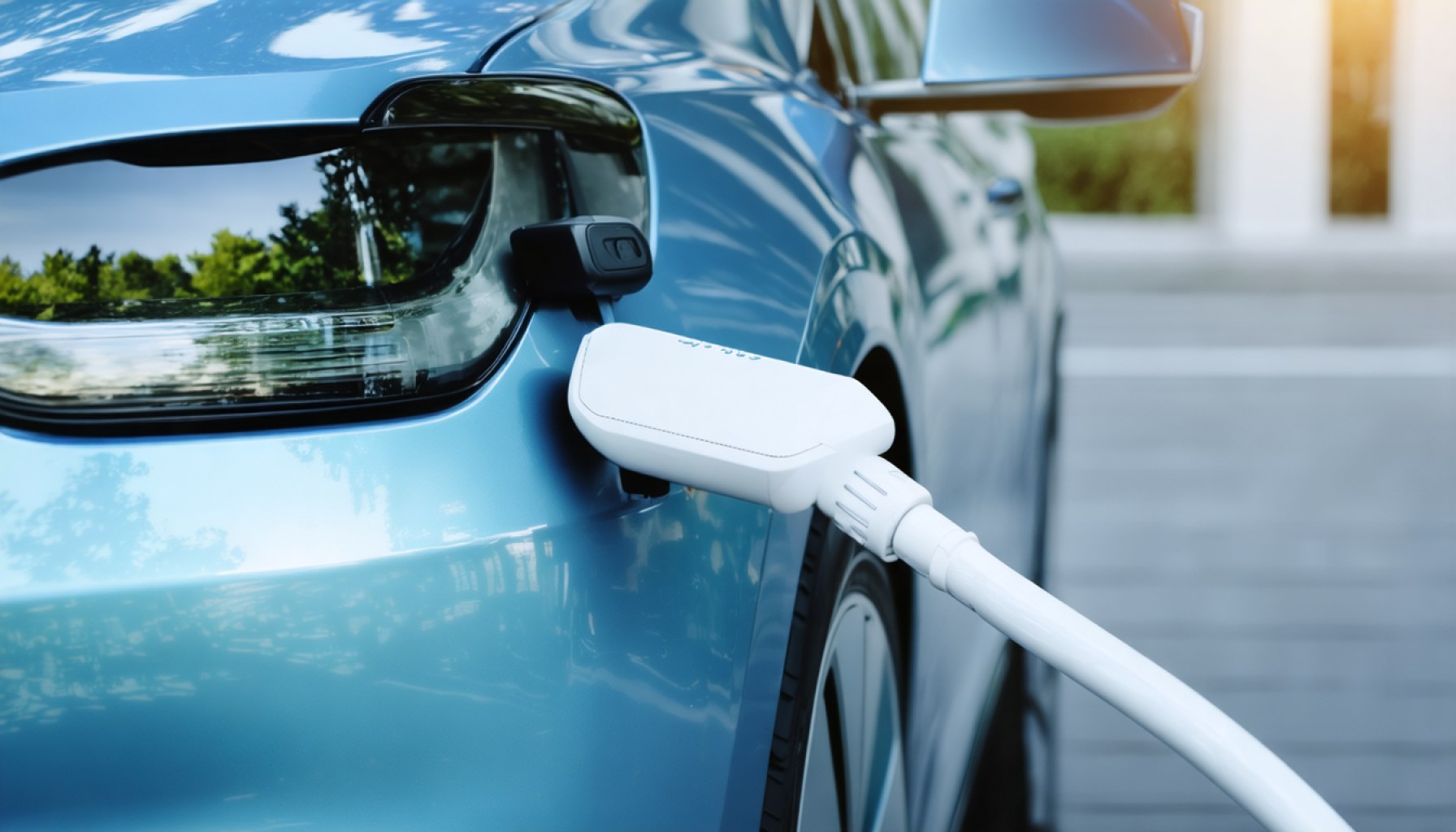- The SLAC-Stanford Battery Center’s study reveals new insights into electric vehicle (EV) battery longevity, transforming our understanding of EV sustainability.
- Real-world driving conditions, like urban commuting patterns, significantly enhance battery life compared to traditional test simulations.
- Global EV sales have surged to 18% of all car sales in 2023, highlighting the importance of longer-lasting batteries for consumers and resale value.
- Services such as Recurrent offer detailed battery health reports, potentially increasing resale profits by an average of $1,400.
- This breakthrough supports a brighter future for EV ownership by ensuring battery durability, boosting consumer confidence and assisting the transition to electric transportation.
- The findings emphasize the need for updated battery testing methods as the auto industry evolves.
Beneath Palo Alto’s hallowed academic halls, a revelation from the SLAC-Stanford Battery Center promises to transform our understanding of electric vehicles. Imagine a world where your electric vehicle (EV) battery endures the rigorous tests of time, defying current expectations. This is not just a futuristic fantasy but a burgeoning reality, based on a study illuminating overlooked truths about EV battery longevity.
Drawing insights from varied terrains and unpredictable traffic conditions, Stanford scientists embarked on an ambitious mission. Their findings dismantled the conventional wisdom surrounding battery testing. Prior tests, akin to relentless marathons of continuous depletion and recharging, often fell short in accurately simulating the day-to-day dance of urban driving. Think of your own commutes: the rhythmic symphony of acceleration, braking, halts, and hours resting while you work or shop. These real-world conditions, it turns out, extend a battery’s life far beyond past predictions.
Such discoveries couldn’t come at a more pivotal moment. As global EV sales climb—reaching a staggering 18% of all car sales in 2023—the promise of extended battery life heralds brighter prospects for drivers worldwide. Longer-lasting batteries not only suggest years more on the road but also hint at tantalizing prospects for resale values, a lifeline for the savvy and eco-conscious car owner.
Services such as Recurrent play a crucial role here, offering sellers a detailed health report of their EV batteries. This digital companion ensures sellers can provide peak insights, netting them on average $1,400 more than their uninformed counterparts. Beyond profit, it provides a strategic advantage, showcasing how your EV stacks up against others, a crucial factor for buyers skimming through listings.
This Stanford-led epiphany doesn’t just impact personal finance; it reshapes the overarching narrative of EV ownership. With more drivers assured of their battery’s robustness, the transition toward an electric future gleams a bit brighter. Just as the automotive world accelerates toward innovation, so too should our understanding keep pace—a charge led robustly by these revelations from Stanford.
Indeed, we stand at the crossroads of change, driven not just by potent engines but by the quiet, persistent hum of research reshaping the roads ahead.
Revolutionary Findings from Stanford: How EV Batteries Can Outlast Expectations
Understanding the Stanford Breakthrough in EV Battery Longevity
The revelations from the SLAC-Stanford Battery Center have illuminated a transformative understanding of electric vehicle (EV) battery endurance and how it can significantly outlive conventional expectations. This breakthrough is pivotal as the adoption of electric vehicles continues to surge globally, making understanding battery longevity crucial for consumers and manufacturers alike.
Key Insights and Findings
1. Real-World Simulation: Stanford researchers have debunked previous battery testing methods by emphasizing real-world driving conditions instead of continuous depletion-recharging cycles. Traditional tests did not accurately replicate the interspersed acceleration, braking, and resting phases typical of urban commuting.
2. Battery Longevity in Context: The study highlights that real-world conditions where vehicles undergo natural pauses—like being parked—can significantly prolong the life of EV batteries compared to older testing scenarios. In turn, this increases the resale value of EV vehicles.
3. Market Impact: With EV sales comprising roughly 18% of global car sales in 2023, extending battery life could dramatically influence consumer confidence and the secondary market for electric cars.
4. Economic Benefits: Services such as Recurrent provide crucial data regarding battery health, increasing the resale value of EVs by an average of $1,400. This can significantly affect the pre-owned EV market, offering substantial economic benefits to sellers.
How-To Steps & Life Hacks
– Monitor Battery Health: Use services that track battery life and performance to maintain an up-to-date health report, enhancing the resale value of your EV.
– Optimal Driving Habits: Practice measured acceleration and braking and take advantage of natural downtime in your driving schedule to extend battery life.
Real-World Use Cases and Applications
– Fleet Management: Fleet operators can apply these insights to maximize vehicle uptime and reduce long-term costs.
– Resale Value Enhancement: Individual owners can boost their vehicle’s resale potential by emphasizing a well-maintained battery in listings.
Industry Trends and Predictions
– Continued Growth in EV Sales: As battery technology advances, expect an upswing in adoption rates, assisted by longer-lasting batteries and favorable resale conditions.
– Advances in Testing Protocols: Future tests may increasingly simulate real-world conditions, refining predictions of battery longevity further.
Pros and Cons Overview
Pros:
– Increased battery life leads to lower overall costs.
– Improved resale values contribute to more affordable entry for new EV buyers.
– Eco-friendly impact with fewer batteries required over time.
Cons:
– Misrepresentation risks if incorrect data is shared.
– Potential resistance from consumers used to traditional combustion engines.
Actionable Recommendations
– Track Battery Performance: Regularly check and document your EV battery’s health with reliable digital tools.
– Educate Yourself: Stay informed about advances in EV technology to make savvy purchasing and selling decisions.
For further insights into electric vehicles and emerging automotive technologies, visit Stanford University. Stay on the cutting edge of innovation and sustainability trends that might impact your driving experience.
